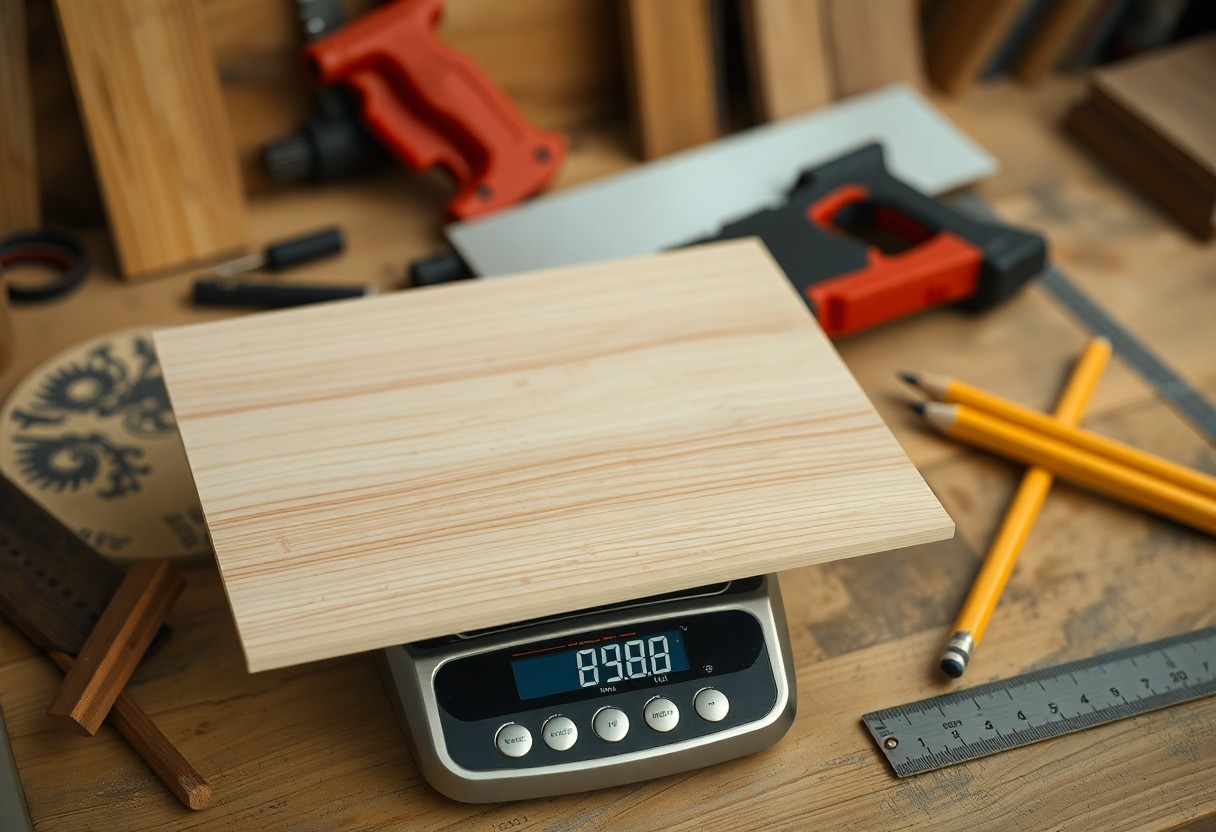When working with wooden blocks, one of the most important considerations is their weight. Whether you’re a carpenter, engineer, or DIY enthusiast, accurately calculating the weight of wooden blocks is necessary for ensuring structural integrity and safety.
They need to know the weight of the blocks to determine the required support and foundation. With a wooden block weight calculator, she can quickly and easily determine the weight of a block based on its dimensions and type of wood, saving time and reducing the risk of errors.
Wooden Block Weight Calculator
While calculating the weight of a wooden block may seem like a daunting task, the wooden block weight calculator simplifies the process by breaking it down into manageable steps.
It’s an intuitive tool that guides users through the calculation process, ensuring accurate results with minimal effort.
Inputting Dimensions
To get started, users need to input the dimensions of the wooden block, including its length, width, and height. These values can be entered in either inches or centimeters, depending on the user’s preference.
Calculating Volume
Among the first steps in calculating the weight of a wooden block is determining its volume. This is done by multiplying the length, width, and height of the block.
And once the volume is calculated, the calculator takes into account the density of the wood type selected by the user. This ensures that the final weight calculation is accurate and reliable, giving users confidence in their results.

Material Density
Even the most experienced craftsmen need to consider the material density when calculating the weight of wooden blocks.
Material density refers to the mass per unit volume of a material, and it varies greatly between different types of wood. Understanding the density of the wood being used is important to get an accurate calculation.
Softwoods
Matter density in softwoods typically ranges from 0.35 to 0.55 g/cm³. Softwoods, such as pine or fir, are generally less dense than hardwoods, which means they are lighter and more prone to warping.
Hardwoods
Above the softwood range, hardwoods have a density of 0.55 to 1.45 g/cm³. Hardwoods, like oak or maple, are denser and heavier than softwoods, making them ideal for construction and furniture-making.
Hence, the density of hardwoods directly affects the weight of the wooden block. For instance, a block of oak will weigh significantly more than a block of pine of the same size.
This is why it’s important to know the specific type of wood being used to get an accurate weight calculation.
Weight Calculation Formula
One of the important aspects of working with wooden blocks is calculating their weight accurately. This calculation is vital in various applications, such as construction, engineering, and even DIY projects.
To get the weight of a wooden block, one needs to multiply its volume by its density.
Imperial Units
Calculating the weight of a wooden block in imperial units involves multiplying the volume in cubic inches by the density in pounds per cubic inch.
This formula provides an accurate estimate of the block’s weight, making it easier to plan and execute projects.
Metric Units
Against the backdrop of increasing global trade, calculating weights in metric units has become the norm. To calculate the weight of a wooden block in metric units, one multiplies its volume in cubic meters by its density in kilograms per cubic meter.
At the heart of accurate weight calculation lies a deep understanding of the block’s density. This value varies depending on the type of wood, with denser woods like oak and maple weighing more than less dense woods like pine and fir.
By considering these factors, they can ensure precise weight calculations, leading to successful projects and reduced errors.
Using the Calculator
Once again, simplicity is key when it comes to using the wooden block weight calculator. With a few quick clicks, users can determine the weight of their wooden blocks with ease.
The calculator’s intuitive design ensures that even those without extensive mathematical knowledge can navigate it with confidence.
Entering Data
On the calculator’s main page, users will find a series of fields where they can input the necessary data. This includes the type of wood, the block’s dimensions, and the unit of measurement.
By filling in these fields accurately, users can ensure that their calculations are precise and reliable.
Interpreting Results
Results are displayed in a clear and concise manner, allowing users to quickly grasp the weight of their wooden blocks.
The calculator provides the weight in the chosen unit of measurement, making it easy to understand and apply to real-world projects.
Even more useful is the calculator’s ability to provide a breakdown of the calculation process.
This feature allows users to see exactly how the weight was determined, giving them a deeper understanding of the underlying mathematics.
This can be particularly helpful for those looking to refine their calculations or explore different scenarios.
Real-World Applications
Your wooden block weight calculator can be applied in various industries and projects, making it a valuable tool for professionals and DIY enthusiasts alike.
Furniture Making
Manufacturing sturdy and balanced furniture pieces requires precise calculations of weight and density. By using a wooden block weight calculator, furniture makers can accurately determine the weight of their designs, ensuring stability and safety.
Construction Projects
Applications of wooden block weight calculators extend to construction projects, where precise weight calculations are necessary for structural integrity and load-bearing capacities.
Indeed, construction professionals can utilize wooden block weight calculators to determine the weight of wooden beams, pillars, and other structural elements, ensuring that buildings and bridges can withstand various loads and stresses.
This precise calculation helps prevent costly mistakes and ensures the safety of occupants and users.
Tips and Considerations
Despite the calculator’s accuracy, it’s imperative to consider various factors that can affect the weight of wooden blocks.
When using the calculator, they should take into account the specific type of wood, its moisture content, and the direction of the wood grain.
These factors can significantly impact the final weight calculation. To ensure accurate results, they should:
- Use precise measurements of the block’s dimensions.
- Consult the wood’s specific gravity or density.
- Account for any defects or irregularities in the wood.
Knowing these factors will help them achieve more accurate weight calculations.
Moisture Content
Beneath the surface of every wooden block lies a hidden variable that can significantly impact its weight: moisture content.
Wood is a porous material that can absorb or release moisture, affecting its density and, consequently, its weight. They should consider the wood’s moisture content when using the calculator to ensure accurate results.
Wood Grain Direction
Across the wooden block, the direction of the wood grain can also influence its weight. The grain direction can affect the block’s density, making it heavier or lighter depending on the orientation.
In addition to considering the grain direction, they should also think about how it interacts with the block’s dimensions.
For example, a block with a grain direction parallel to its longest dimension may be heavier than one with a grain direction perpendicular to it. By taking these factors into account, they can refine their weight calculations and achieve more accurate results.
Final Words
Presently, the Wooden Block Weight Calculator has proven to be a valuable tool for individuals seeking to accurately determine the weight of wooden blocks. With its user-friendly interface and straightforward calculations, it has simplified the process of estimating weights.
They can now confidently proceed with their projects, armed with the knowledge of precise weights.
The calculator’s ease of use and reliability have made it an indispensable resource for those working with wooden blocks.








